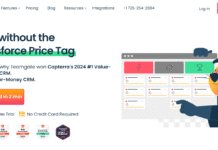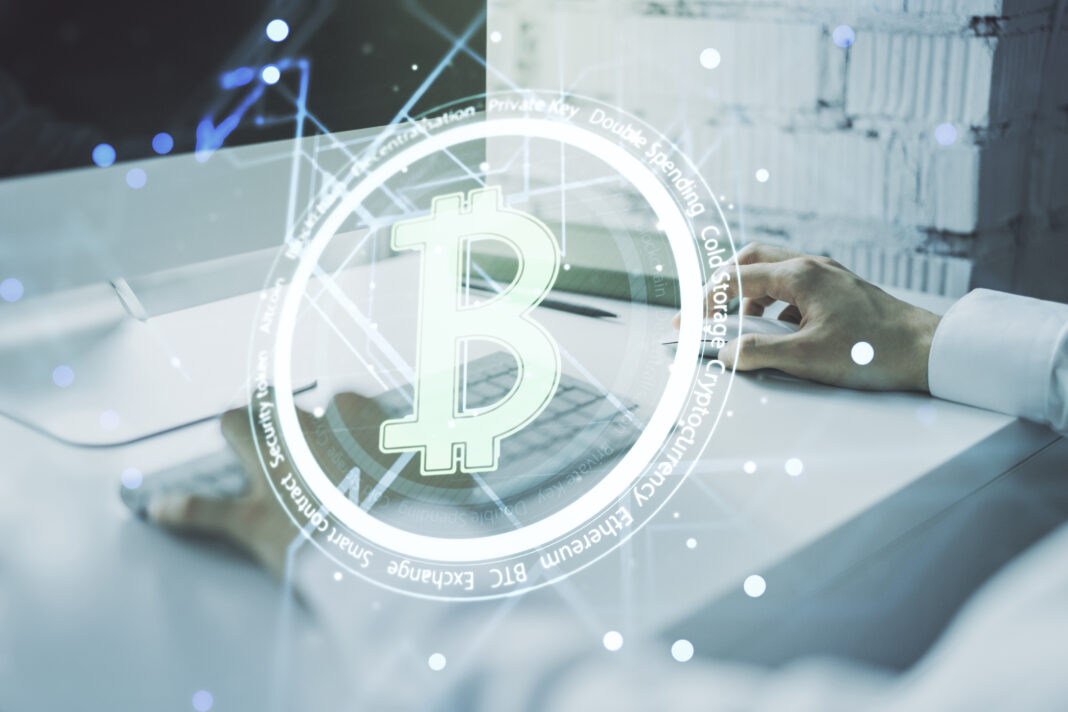The global economy is entering a new era where traditional ownership models are being redefined through blockchain technology. Among the most promising developments shaping this transformation is asset tokenization, a process that converts physical or financial assets into digital tokens recorded on a blockchain. For startup founders, this innovation represents not just a technical milestone but a fundamental shift in how value is created, managed, and exchanged.
The core principle behind asset tokenization is the conversion of real-world assets—such as real estate, equities, commodities, or intellectual property—into divisible and tradeable digital units. These tokens embody ownership rights and can be transferred instantly without intermediaries. The concept merges financial inclusion with technological efficiency, opening up capital markets to a global audience.
While large corporations and financial institutions were the early adopters of blockchain, the playing field is rapidly leveling. Startups can now harness tokenization to launch novel business models, reduce friction in fundraising, and create transparent ecosystems of ownership and exchange. For founders, it is not merely about building blockchain applications but about rethinking how capital formation and participation work in the digital age.
This article explores the foundations, business opportunities, legal considerations, and infrastructure supporting asset tokenization. It also highlights how startup founders can leverage this paradigm to create scalable, compliant, and community-driven enterprises in a rapidly evolving financial ecosystem.
The Foundations of Asset Tokenization
Understanding the Core Mechanism
At its essence, asset tokenization is the process of representing ownership of tangible or intangible assets through blockchain tokens. Each token corresponds to a share or fraction of the underlying asset, recorded immutably on a distributed ledger. This mechanism ensures transparency, reduces settlement time, and minimizes counterparty risk.
For example, a startup could tokenize a commercial building by issuing one million tokens, each representing a small ownership stake. Investors from anywhere in the world could purchase these tokens using cryptocurrency or fiat currency, enabling fractional ownership without geographic or regulatory barriers. The same model applies to stocks, art pieces, patents, or even carbon credits.
By digitizing ownership in this way, startups can unlock liquidity for traditionally illiquid assets. Investors gain flexibility to enter or exit positions at any time, while asset owners expand access to capital beyond conventional financing channels.
Technological Infrastructure
Successful asset tokenization relies on several technological pillars. Smart contracts automate the issuance, transfer, and compliance of tokens. Decentralized ledgers provide immutable records of ownership, while custody solutions ensure secure storage of private keys and digital assets.
Startups must choose the right blockchain infrastructure to match their business goals. Public blockchains like Ethereum offer openness and interoperability, while private or permissioned blockchains provide more control and regulatory compliance. The choice affects scalability, transaction costs, and ecosystem compatibility.
Interoperability standards are also evolving. Protocols like ERC-1400 and ERC-3643 establish frameworks for compliant tokenized securities. These standards support Know Your Customer (KYC) integration, transfer restrictions, and investor rights management—features essential for real-world adoption.
Regulatory Foundations
Compliance is a critical component of asset tokenization. Since tokens often represent securities or regulated financial products, startups must navigate complex legal frameworks. Jurisdictions differ widely in how they classify tokenized assets. Some view them as digital securities, while others treat them as new asset categories requiring fresh legislation.
Founders should work closely with legal advisors to define the token’s nature and jurisdictional scope. Many projects employ hybrid structures combining on-chain tokens with off-chain legal agreements that define ownership and enforce rights. This combination ensures both technological efficiency and legal enforceability.
Regulatory clarity continues to improve as governments recognize the potential benefits of tokenization for market transparency and inclusion. Regions such as Singapore, Switzerland, and the United Arab Emirates have emerged as innovation hubs due to their progressive regulatory environments.
Business Opportunities for Startup Founders
Fractional Ownership Models
The most direct opportunity for asset tokenization lies in fractional ownership. By dividing large assets into smaller digital shares, startups can attract a broader investor base. This model has particular relevance in real estate, luxury goods, and art. A startup could tokenize a valuable painting or a residential complex, allowing hundreds of micro-investors to participate.
Fractional ownership democratizes access to high-value markets traditionally reserved for institutional players. It also creates secondary markets where investors can trade their tokens freely, improving liquidity and transparency.
Fundraising and Venture Capital Innovation
Startup founders often struggle to raise capital without sacrificing control or equity. Asset tokenization offers an alternative by enabling founders to tokenize company shares or revenue streams. Investors can purchase these tokens directly, and the underlying smart contracts handle profit distribution, voting rights, and compliance automatically.
This approach can simplify venture capital processes, reduce intermediaries, and provide real-time tracking of investor participation. Tokenized equity models also appeal to global investors who seek diversification without navigating multiple legal jurisdictions.
The flexibility of tokenized fundraising allows startups to design creative instruments—such as profit-sharing tokens or hybrid tokens that combine utility and security features. These instruments create new pathways for investor engagement and loyalty.
Tokenized Infrastructure and Supply Chains
Beyond financial assets, asset tokenization can revolutionize infrastructure and supply chains. Startups can issue tokens representing raw materials, logistics milestones, or finished products. These tokens function as verifiable certificates of origin, ensuring transparency from production to delivery.
For instance, in the agricultural sector, tokenizing harvest output enables farmers to secure financing based on tokenized crop futures. Investors can track production data through blockchain and gain confidence in the asset’s authenticity. Similar use cases extend to manufacturing, energy, and commodity trading.
Loyalty, Royalties, and Intellectual Property
Creative industries and technology startups can use asset tokenization to manage intellectual property rights or royalties. Musicians, writers, and software developers can issue tokens tied to their creations. Holders receive a share of royalties whenever the asset generates revenue.
This mechanism encourages direct engagement between creators and supporters, bypassing traditional intermediaries. For founders, it represents a scalable model that merges community participation with transparent revenue distribution.
Technical and Market Challenges
Liquidity and Market Adoption
While asset tokenization promises liquidity, achieving active secondary markets remains challenging. Liquidity depends on the number of participants, regulatory acceptance, and integration with existing exchanges. Startups must focus on partnerships with digital asset marketplaces and custodians to ensure frictionless trading.
Creating demand also requires investor education. Many potential participants are still unfamiliar with blockchain technology or tokenized investment structures. Effective communication, transparency, and simplified onboarding processes are crucial for market expansion.
Valuation and Transparency
Accurate valuation of tokenized assets is another concern. Startups must ensure that the underlying asset’s value aligns with the token’s price on the market. Integrating real-time data feeds and third-party audits helps maintain trust. Independent custodians can provide verification of asset existence and condition.
Without clear valuation mechanisms, tokenized assets risk volatility and investor skepticism. Building transparency through data disclosure and on-chain reporting can mitigate these risks.
Security and Custody Risks
Protecting tokenized assets is paramount. Private key management errors or smart contract vulnerabilities can lead to irreversible losses. Crypto custodians and multi-signature wallets offer enhanced protection, but startups must also invest in continuous security audits.
Moreover, compliance with data protection laws must not be overlooked. Tokenization often involves personal or financial information that must adhere to regional privacy regulations. Failing to secure user data could undermine trust and invite legal challenges.
The Ecosystem and Collaboration Potential
The rise of asset tokenization has sparked collaboration among blockchain developers, fintech platforms, and institutional investors. Startups rarely operate in isolation; they form partnerships to build integrated ecosystems combining issuance, trading, and compliance.
Decentralized finance (DeFi) protocols are beginning to adopt tokenized real-world assets as collateral. This trend merges traditional finance with the decentralized economy, giving startup founders a gateway to new liquidity sources. For example, tokenized real estate or corporate bonds can be deposited into lending pools to generate yield.
Collaboration with existing blockchain infrastructure providers accelerates development and enhances credibility. Founders can leverage standardized protocols, audited smart contracts, and investor networks instead of building everything from scratch.
For readers exploring related blockchain opportunities, see Startupik’s crypto startups section to understand how innovators are bridging blockchain technology with real-world value creation.
Investment Trends and Global Momentum
The past few years have seen a rapid acceleration in venture funding and institutional adoption of asset tokenization. Major financial institutions, blockchain foundations, and government bodies are experimenting with digital representations of assets to modernize market infrastructure. For startup founders, this expanding ecosystem offers fertile ground to launch ventures that merge traditional finance with blockchain innovation.
One of the most significant developments has been the rise of tokenized funds and real estate platforms. These platforms fractionalize large projects and make them accessible to a global audience. Such initiatives validate the business model for asset tokenization and demonstrate that startups can operate alongside established financial players while maintaining agility and creativity.
Private equity firms and venture funds are also exploring tokenized limited partnerships. Instead of issuing traditional paper-based shares, investors receive tokens that represent their holdings. This format allows more fluid transfers and real-time tracking of performance. As these instruments gain acceptance, startup founders will find it easier to attract global investors who prefer digital ownership mechanisms.
The expanding regulatory acceptance in financial centers like Singapore, Zurich, and Dubai is also critical. These jurisdictions provide frameworks that legitimize asset tokenization as part of mainstream finance. Progressive regulations encourage innovation by protecting investors while enabling experimentation. This combination of compliance and creativity makes these regions ideal launchpads for startups building tokenized solutions.
Practical Steps for Startup Founders
Founders seeking to participate in asset tokenization must approach the process strategically. The journey involves technological decisions, regulatory navigation, and market education. Understanding each component helps ensure successful implementation and long-term sustainability.
Identifying the Right Asset Class
The first step is to select an asset type with both demand and tokenization feasibility. Real estate, commodities, fine art, renewable energy, and intellectual property are common starting points. Each asset type carries unique legal and logistical considerations. For example, tokenizing real estate requires property valuation and ownership verification, while tokenizing carbon credits involves environmental certification.
Startup founders should assess market appetite and regulatory constraints before choosing an asset. The ideal candidates are high-value but illiquid assets that benefit from fractional ownership and global accessibility.
Building the Technological Framework
Once the asset type is chosen, the next step is designing the technological infrastructure. Asset tokenization platforms require secure smart contracts, investor interfaces, and compliance modules. The system must support identity verification, audit trails, and transparent reporting.
Many startups leverage open-source protocols rather than developing proprietary systems. This approach reduces costs and accelerates deployment. Public blockchains such as Ethereum or Polygon offer established standards and interoperability, while permissioned chains can accommodate enterprise requirements. Founders must evaluate transaction fees, scalability, and governance compatibility when making these decisions.
Managing Compliance and Regulation
Legal compliance is one of the most complex aspects of asset tokenization. Tokenized assets often qualify as securities, triggering local and international regulations. Founders must integrate compliance from the outset to avoid future setbacks.
Partnering with specialized legal and fintech advisory firms helps align token issuance with regional laws. Many startups employ hybrid legal structures that link blockchain tokens with off-chain contracts specifying rights, obligations, and dispute resolution mechanisms. This combination ensures that tokens are not merely technical artifacts but legally enforceable instruments of ownership.
Creating Market Liquidity
A tokenized asset is valuable only when it can be traded efficiently. Asset tokenization thrives on liquidity, which depends on exchange integration and investor participation. Founders can establish partnerships with licensed digital asset exchanges or decentralized marketplaces to facilitate trading. Incentive programs for early liquidity providers can stimulate activity during initial stages.
Liquidity also benefits from transparency. Providing continuous valuation updates, audit certifications, and asset performance data fosters trust and encourages long-term investment. Educating investors about the benefits of digital ownership is equally important.
Case Studies and Real-World Implementations
Real Estate Fractionalization
In several countries, startups have successfully implemented asset tokenization for real estate portfolios. Residential and commercial properties are divided into digital shares that investors can buy and trade globally. Each token grants proportional ownership and income rights.
These initiatives lower entry barriers for small investors who previously could not access real estate markets. They also enable real-time valuation and streamlined secondary market trading. The success of these ventures demonstrates how tokenized ownership models can bridge the gap between traditional assets and digital finance.
Art and Collectibles
Another high-growth segment for asset tokenization is art and collectibles. Tokenizing rare artworks, vintage cars, or luxury watches allows shared ownership of high-value cultural assets. Investors receive digital certificates verifying authenticity, stored securely on blockchain.
This trend not only democratizes art investment but also supports creators seeking alternative funding models. Token holders may receive exhibition rights, royalties, or governance privileges in art funds. Such diversification of utility expands the investor base beyond pure speculation.
Renewable Energy and Sustainability Projects
Environmental and energy sectors are also adopting asset tokenization. By issuing tokens tied to solar farms or wind turbines, startups create transparent financing models for sustainable infrastructure. Investors can participate in green projects and monitor energy output directly through blockchain data.
These initiatives attract environmentally conscious investors while providing startups with alternative capital sources. The tokenization of sustainability projects aligns environmental impact with financial incentives, building trust in an increasingly ESG-focused market.
Commodities and Supply Chain
Commodity trading is another area where asset tokenization delivers tangible advantages. Startups tokenize metals, agricultural produce, or industrial materials to enable faster settlement and reduced fraud. Each token corresponds to a verified batch of goods, recorded and traceable from source to delivery.
Tokenization simplifies logistics and financing in industries where documentation and cross-border coordination are complex. It ensures transparency while minimizing operational delays, making it attractive for trade finance and logistics startups.
Strategic Advantages for Startups
Global Investor Access
Through asset tokenization, startups can reach investors across borders without relying on traditional financial intermediaries. Digital tokens enable 24/7 trading, instant settlement, and lower transaction costs. This global accessibility helps startups scale quickly while diversifying their investor base.
Reduced Operational Costs
Traditional asset management involves numerous intermediaries—brokers, custodians, auditors—that increase cost and delay. Tokenized systems automate many of these functions using smart contracts, drastically reducing overhead. Lower friction enhances competitiveness and enables startups to offer more attractive pricing or higher returns.
Transparency and Trust
Blockchain transparency ensures that ownership records and transaction histories are immutable. Investors can verify holdings, transfers, and valuations in real time. For startup founders, this transparency strengthens brand credibility and mitigates concerns about fraud or mismanagement.
Enhanced Liquidity and Flexibility
Illiquid assets like real estate or private equity shares become tradable through asset tokenization. Investors no longer need to hold assets for extended periods before realizing returns. This flexibility appeals to retail and institutional investors alike, fostering broader market participation.
Future Outlook and Innovation Horizon
The evolution of asset tokenization will continue as regulatory clarity improves and technology matures. Within the next few years, startups are expected to lead in developing specialized tokenization platforms for niche markets such as healthcare, intellectual property, and renewable infrastructure.
Artificial intelligence and data analytics will complement blockchain in automating asset valuation and compliance monitoring. Predictive analytics could assess market demand and risk for tokenized portfolios, providing valuable insights for investors and founders.
Interoperability across chains will also become standard, allowing tokens to move freely between networks. This fluidity will enhance liquidity and reduce fragmentation. Standardized frameworks for custody, reporting, and dispute resolution will make asset tokenization more attractive to institutional investors.
In the longer term, national governments and banks may integrate tokenized infrastructure into monetary systems. Central bank digital currencies (CBDCs) could interact seamlessly with tokenized securities, creating unified ecosystems for payments and investments. Such integration would validate the role of startups as foundational innovators in global finance.
Key Risks and Considerations
Despite its potential, asset tokenization faces challenges. Regulatory shifts could alter classification or restrict cross-border trading. Startups must remain agile and update compliance strategies regularly. Technological vulnerabilities, including smart contract bugs and cyberattacks, require ongoing auditing and risk management.
Market education remains another hurdle. Many potential investors lack understanding of digital asset mechanics. Founders must invest in educational outreach and clear communication to foster trust and adoption.
Economic volatility can also affect token prices even when the underlying asset remains stable. Transparent valuation and prudent treasury management can mitigate this risk. A focus on genuine asset utility rather than speculative demand ensures long-term stability.
Conclusion
Asset tokenization represents a profound evolution in how ownership and value operate in the modern economy. For startup founders, it offers a pathway to innovation that combines financial inclusion, technological transparency, and global accessibility. By transforming illiquid assets into tradable digital tokens, entrepreneurs can unlock liquidity, engage diverse investors, and build transparent ecosystems of trust.
The journey, however, demands rigor and responsibility. Founders must integrate strong governance, security, and compliance from the outset. Success will depend on balancing innovation with regulatory clarity, ensuring that technology serves both investors and the broader economy.
As blockchain adoption accelerates, asset tokenization will become the foundation of next-generation financial systems. Startups that act early and build credible, compliant platforms will shape the future of ownership and investment. The opportunity is vast, but it requires vision, discipline, and a long-term perspective.
For visionary founders, this is more than a trend—it is a new infrastructure for the digital economy. Those who master asset tokenization today will define how assets are owned, exchanged, and experienced tomorrow.
















































💯🔥
Green energe certificate tokens A token that represents proof that 1 MWh of electricity was genarated from a renewable source, this provides a transparent, and tradable record for corporations to meet sustainability goals.
Decentralized social m3dia curation token; token holders stake token to prmote high quality content , when that contet does well the curaters earn a share of the rewarads.